Why You Don’t Need to Wait 3-5 Days Between Offering New Foods to Your Baby
- Why waiting 3-5 days between new foods can slow down your baby’s progress
- How to safely offer 1 (or more) new food(s) per day…and why this is safe
- When to sequence the introduction of allergenic foods to observe for reactions
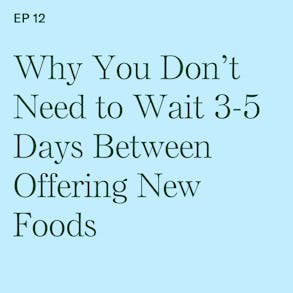
LISTEN TO THIS EPISODE
Episode Description
You do not need to wait 3-5 days between offering new foods to your baby. In fact, waiting that long can actually slow down your baby’s progress and prevent diet diversity. In this episode we look at the research that supports quicker introduction of new foods; it is safe to offer 1 (or more) new food(s) per day and this approach can help reduce the risk of severe picky eating and help your baby learn to safely eat and like real food.

Links from This Episode
- Baby-Led Weaning with Katie Ferraro program with the 100 First Foods™ Daily Meal Plan, join here: https://babyledweaning.co/program
- Baby-Led Weaning for Beginners free online workshop with 100 First Foods™ list to all attendees, register here: https://babyledweaning.co/baby-led-weaning-for-beginners
Other Episodes Related to This Topic
- Episode 70 - The Evidence Behind Baby-Led Weaning with Amy Brown, PhD
- Episode 84 - Why You DON'T Need to Wait 3-5 Days Between New Foods with Carina Venter, PhD, RD
Resources and Research
- Data4Diets: Building Blocks for Diet-related Food Security Analysis, Version 2.0. (2023). Tufts University, Boston, MA. https://inddex.nutrition.tufts.edu/data4diets. Accessed on 21 May 2024.
- Kennedy, Gina L. "Food Variety And Dietary Diversity Scores In Children: Are They Good Indicators Of Dietary Adequacy?." Evaluation Of Dietary Diversity Scores For Assessment Of Micronutrient Intake And Food Security In Developing Countries, Thesis submitted in partial fulfillment of the requirements for the degree of doctor at Wageningen University, 2009, pp. 43-57. edepot.wur.nl/14551.
- Rowan, H., Lee, M., & Brown, A. (2019). Differences in dietary composition between infants introduced to complementary foods using Baby-led weaning and traditional spoon feeding. Journal of human nutrition and dietetics : the official journal of the British Dietetic Association, 32(1), 11–20.
- World Health Organization Nutrition Landscape Information System (NLiS). https://www.who.int/data/nutrition/nlis/info/infant-and-young-child-feeding. Accessed 6 Apr 2024.

Latest Episodes
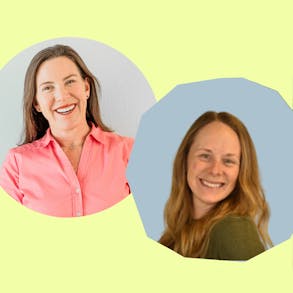
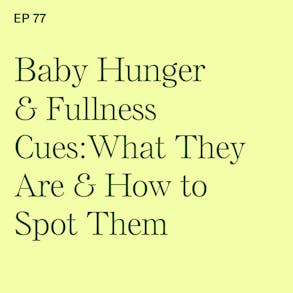
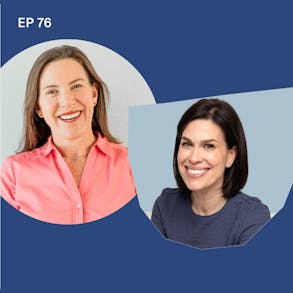
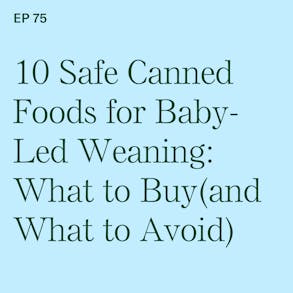
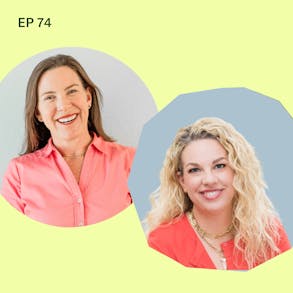
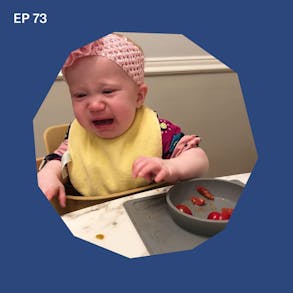
Katie Ferraro (0s):
Before we get started, I just wanted to drop a Happy Father's Day to all the dads out there who are doing Baby-Led Weaning. I totally get that. The vast majority of our audience are moms, but there are a lot of dads who are actively involved in helping their babies learn how to start solid foods safely. I remember when our twins, Guss and Hannah were starting solid foods. They were our sixth and seventh babies. I'd been teaching Baby-Led Weaning full time for a number of years before this. My husband would still roll into the kitchen and be like, are you sure the babies can eat that? Are they gonna choke? And I'd be like, oh my gosh. Yes they can. They're safe. But I loved that he would get into it, and he was so proud of all of the foods that his babies were learning how to eat. So I just wanted to wish all of the dads out there a very happy Father's Day, especially if it's your first Father's Day.
Katie Ferraro (42s):
So thank you for helping your baby learn how to eat, and I hope you have a wonderful Father's Day.
Puffworks (49s):
Checking in about food allergies and introducing allergenic foods. And have you done peanut with your baby yet? Well intact nuts and thick glob of nut butters like peanut butter are choking hazards for babies. But we wanna get that peanut protein into your baby early and often in order to help lower the risk of peanut allergy down the road. My absolute favorite way to introduce peanuts for babies is using the Puffworks, baby peanut puffs. So when you hear puffs like you're probably like, oh, those starchy little puff things, like, no, no, no, not the little ones that earlier eaters can't pick up those kind of crappy puffs from the store that have added sugar and refined grains and lots of salt. Uhuh. The Puffworks, baby peanut puffs have no added sugar. They have just a smidge of sodium for preservatives, and they are the perfect size for Baby-Led Weaning. They're about the size of your adult pinky finger, so you get baby can pick 'em up, self feed them, but they're so soft that they dissolve in your baby's mouth. So you can introduce these peanut puffs even before your baby has teeth. Puffworks also makes a baby almond puff for the safe introduction of a separate allergenic food category, that's tree nuts. And now finally, Puffworks [ut out a combo case so it's half baby peanut and half baby almond. So if you want to grab one case, then you can knock out two new allergenic foods. We do these on different days, though. These are just the no stress low mess way to get peanut and tree nut outta the way. So you can get 15% off everything at puffworks.com when you use the affiliate discount code BLWPOD. That's a new code, it's BLWPOD. Use that sucker at checkout@puffworks.com and get peanut and tree nut safely outta the way.
Katie Ferraro (2m 33s):
And while, yes, it's true that we should wait a period of time between the introduction of the allergenic foods for the rest of the low risk foods, there's absolutely no data to support the idea that you need to wait three to five days between those foods. They're very unlikely to cause a reaction. Hey there, I'm Katie Ferraro, Registered dietitian, college nutrition professor and mom of seven specializing in Baby-Led Weaning. Here on the Baby-Led Weaning with Katie Ferraro podcast. I help you strip out all of the noise and nonsense about feeding, giving you the confidence and knowledge you need to give your baby a safe start to solid foods using Baby-Led Weaning.
Katie Ferraro (3m 19s):
Hello and welcome to the Baby-Led Weaning Made Easy podcast. This is Katie Ferraro, registered dietitian and mom of seven specializing in Baby-Led Weaning. Today we are talking about why you don't need to wait three to five days between trying new foods with your baby. Now, I teach these online workshops every week about Baby-Led Weaning for Beginners, and there's a Q&A session at the end. And I would say one of the top three most frequently asked questions is, hang on, you're saying introduce one new food per day. My doctor says, wait three to five days between introducing new foods, what gives? Well, if any of you guys have taken my workshop where you're familiar with my five step feeding framework, I teach a 100 First Foods approach to Baby-Led Weaning whereby I teach you how to feed your baby five new foods a week, 20 new foods a month, a hundred foods before your baby turns one.
Katie Ferraro (4m 13s):
But the crux of this is introducing your baby to five new foods per week. And that does fly in the face of what many pediatricians say, which is you should wait three to five days between foods. But as I like to start every episode with a Baby-Led Weaning tip of the day, today's tip is you don't need to wait three to five days between introducing low risk foods. Now the key here, and I'm gonna go into detail in today's episode, is to talk to you about the difference between low risk foods and potentially allergenic foods. 'cause they're two totally different things. So you'll know which ones it's okay to introduce your baby to day after day, one new food per day, and then which ones you actually do need to wait a little bit longer.
Katie Ferraro (5m 0s):
But the caveat there is that there's two different categories, and unfortunately, what a lot of pediatricians say, which is untrue and what parents hear, which is unfortunate, is that they should wait three to five days between introducing all foods and there's no evidence to support that. So if you guys have heard of the big eight allergenic foods, I think that's a good place to start. The big eight allergenic foods are the eight foods that account for about 90% of food allergy. So these are milk, egg, peanut, wheat, soy, tree nut, fish and shellfish. And then occasionally sesame gets lumped in there as number nine because sesame allergy certainly is on the rise. So let's say there's nine allergenic foods if you're introducing a hundred new foods to your baby, and nine of them are allergenic foods.
Katie Ferraro (5m 47s):
I feel like this is how I do math with my kindergartner. How many low risk foods are left 91 foods? So if you're, if you have a copy of my 100 First Foods list, which you can grab on my free online workshop, Baby-Led Weaning for Beginners, it's all about how to teach your baby to eat a hundred foods without having to spoon feed, purees or buy pouches. You can sign up for that workshop. I'll link to it in the show notes if you go to blwpodcast.com/12, I've got more information about food allergies there, including a link to the workshop. On the workshop. I give everyone my 100 First Foods list, and I've now helped thousands of babies eat a hundred different foods before turning one.
Katie Ferraro (6m 26s):
And it's fascinating to see all the babies who want to eat a variety of foods when their parents and caregivers actually let them do it, because you guys, we know that there's research that shows us that babies who are exposed to the greatest variety of foods and flavors and tastes and textures, those are the babies who become independent eaters who are less likely to be picky eaters. But if you're waiting five days between strawberries and corn, there's no way your baby is going to get to that big variety of foods in their repertoire that we wanna see them have before they turn one.
Katie Ferraro (7m 10s):
Hey, we're gonna take a quick break, but I'll be right back.
The Motley Fool (7m 13s):
Hey there. I'm Dylan Lewis, one of the hosts of Motley Fool Money. Each weekday on Motley Fool Money. We talk through the business news you need to know and the stories moving stocks on Wall Street. On weekends, we dive into the industry shaping tomorrow and host the experts, authors and executives that understand them. Tune in for insights, a long-term perspective on investing. And of course, stock ideas, plenty of them. To quote a listener, i"t pays to listen". Check us out and subscribe wherever you listen to podcasts.
Katie Ferraro (7m 45s):
So in my five step feeding framework, I teach you guys how to introduce your baby to five new foods per week. I like to think of it as my job. I have to go to work five days a week. I need to introduce five new foods Monday to Friday. There's five food categories in the feeding framework. The first bucket are fruits, the second are vegetables. The third are the starchy foods. The fourth are protein foods, and the fifth is the challenge category. So I'm kind of type A as many dieticians are. There are 20 foods in each of the five categories. 20 times five is a hundred, right? If you introduce five new foods to your baby a week, one from each category, four weeks in a month, that's 20 foods a month.
Katie Ferraro (8m 26s):
You do that for five months, your baby's eaten a hundred different foods. That's how you get your baby to the 100 First Foods mark. And parents will say, yeah, but you're doing one new food every week. How would you observe for any reaction if you're introducing a new food? How would you know if it was the food from yesterday or the food for today? And the reality is, if you look at the feeding framework on the fifth day is when you introduce a challenge category food. So inside of the challenge category for the first nine weeks of starting solids, when the baby's six months of age plus exhibiting the other signs of readiness defeat. For those first six weeks of feeding, I do one new allergenic food per week on Friday, I like to start with egg, milk, and peanut.
Katie Ferraro (9m 8s):
Those are the three most common pediatric food allergies. In episode 11, I talk to you more about how to introduce allergenic foods, and I'll be going into more detail in future episodes about how you specifically introduce each one of those eight foods. But let's suffice it to stay starting on week one, the fifth day that your baby eats solid foods that Friday, give them an allergenic food. I say start with yogurt. It's a great way to do milk protein. Week two, I do egg. On Friday week three, I do peanut. Again, I'll have more resources and dedicated episodes for you about doing each of those. But the point is, if you pay attention, you're introducing the new allergenic food on Friday.
Katie Ferraro (9m 48s):
There's actually seven days between the introduction of the first allergenic food and the next allergenic food that's longer than three to five days. But the other days in the week, there is no reason why you cannot or should not introduce low risk foods like avocado, banana, sweet potato, strawberry, corn, The 91 other foods on the 100 First Foods list that are almost unlikely for your baby to be allergic to. Now, of course, there are always obscure food allergies. A baby can be allergic to potentially any food, but the reason why they're called the big eight foods is because they account for 90% of food allergy. And unless your baby is in the very small percentage of babies who are identified as being at high risk for food allergy, those high risk babies, you should certainly consult your pediatrician.
Katie Ferraro (10m 37s):
You should know if your baby's at high risk, especially for peanut allergy. The guidance has changed significantly. We now know that the babies who are at high risk for peanut allergy are those who already have an egg allergy and or those who have severe eczema, not the run of the mill eczema that I know your babies all have severe eczema and or egg allergy. Yes, those babies, we need to take precaution with peanuts. And if your baby's allergic to peanuts, there's a higher risk for being allergic to tree nuts and vice versa. But it doesn't necessarily mean your baby will be allergic to both. And if your baby's not in that high risk category, you don't need to be scared to introduce peanuts one Friday and then do egg the next Friday, and to do strawberries the day before peanut and to do corn the day after peanut for the low risk foods, it's perfectly safe to introduce those foods one day at a time.
Katie Ferraro (11m 23s):
We do introduce a new food by itself. We observe for any potential reaction. The reality is if your baby is going to have a reaction, the vast majority of those reactions will occur within the minutes or the hours following the ingestion of that potentially offending food. It's not like your baby's going to try a strawberry and then three days later you'll see a weird diaper and you're like, hmm, I wonder if that was the strawberry from a few days ago. It doesn't work like that with the low risk foods. Now, what should you be observing for about reactions? Well, anaphylactic reaction certainly is very serious and life-threatening. But again, unless your baby is at elevated risk for food allergies, it's unlikely that your baby would have an anaphylactic reaction to any of the new foods that you're introducing.
Katie Ferraro (12m 8s):
But things that are signs of allergic reaction in infants, were looking for a rash around the mouth. Oftentimes it's more like hives, which are raised red, itchy patches all over the body, difficulty breathing. So changes in their respiratory patterns may be accompanied by extreme fussiness as well as vomiting. Those are signs of allergic reaction. Now, just because your baby has a rash around their mouth, you will see rashes around your baby's mouth as you are trying foods. And parents will say, oh my God, my baby's having allergic reaction. More often than not, when you call your pediatrician, they will tell you to treat it with a dose of children's Benadryl, which is based on your baby's weight. So one thing you can do ahead of time before you start solid foods Is to know your baby's weight and get a recommended Benadryl dose from your pediatrician.
Katie Ferraro (12m 50s):
So, because when you call them anyway, that's exactly what they're going to tell you to do. So again, a good majority of these reactions can just be treated with Benadryl, but you do always want to consult your own child's pediatrician. You have to keep in mind that babies aren't trying new foods in a vacuum, right? There's other things going on at the same time, namely teething. So with teething comes excess saliva as the saliva is dripping all over your baby's face and there's new foods and the compounds and the proteins from those foods interacting with that saliva. Sometimes it can exacerbate a rash or cause the rash to be more pronounced than it might be otherwise. Same thing goes for the diaper. When your baby is teething, they're producing extra saliva, they swallow that saliva, it causes changes in the diaper.
Katie Ferraro (13m 33s):
Or sometimes parents will say, oh, I saw some corn, or whatever it is in my baby's stool. That must mean they're allergic to it. No, it does not. Your baby's digestive system is mature enough actually even at two to three months of age to process and to tolerate and to digest all the different nutrients in foods. Now, of course, we don't introduce solid foods to babies at two to three months of age because, A, they don't need it. Breast milk and or formula is sufficient to meet their needs up until six months of age. But secondly, it's not safe. We don't introduce solid foods prior to six months of age 'cause babies can't safely chew and swallow it. But I mention the part about your baby's gut being able to handle these different foods regardless of whether they're high risk foods or low risk foods, because when it comes to introducing new foods in the complimentary foods period, starting at six months of age, we don't wanna withhold any foods because we think our babies can't digest them.
Katie Ferraro (14m 22s):
So sometimes you'll hear, oh, your baby can't digest X, Y, or Z food. No, that's not true. If your baby has an allergic reaction to the protein in the food, yes, then we need to deal with that with an auto epinephrine injector, which your pediatrician would need to prescribe to you. You don't just get one of those in the event that your baby has a reaction. Having Benadryl on hand and your doctor's phone number is probably the most that you would need to do. Hey, we're gonna take a quick break, but I'll be right back.
What Should I Read Next? (14m 56s):
Hello, listeners. This is Ann Bogle, author, blogger, and creator of the podcast. What Should I Read Next? Since 2016, I've been helping readers bring more joy and delight into their reading lives. Every week I check all things, books and reading with a guest and guide them in discovering their next read. They share three books they love, one book they don't, and what they've been reading lately. And I recommend three titles they may enjoy reading. Next, guests have said Our conversations are like therapy, troubleshooting issues that have plagued their reading lives for years and possibly the rest of their lives as well. And of course, recommending books that meet the moment, whether they're looking for deep introspection to spur or encourage a life change or a frothy page-Turner to help them escape the stresses of work, school, everything. You'll learn something about yourself as a reader, and you'll definitely walk away confident to choose your next read with a whole list of new books and authors to try. So join us each Tuesday for What Should I Read Next?, subscribe now, wherever you're listening to this podcast and visit our website whatshouldIreadnextpodcast.com to find out more.
Katie Ferraro (16m 1s):
So I wanna encourage you to offer your baby one new food a day, one new allergenic food a week. And when it comes to that allergenic food introduction, you can't just do it once and then check it off the list. Sorry. The guidance about introduction of allergenic foods says we have to do it early and often, which means you do eggs one day, you do eggs later in the day. You might do eggs the next day and then eggs later that day offer these foods early and often, and parents always ask, well then what like constitutes an efficacious dose? Like how many grams of shellfish protein should my baby have over a three day period? Again, there's no answer to that. The guidance about early and often is actually purposely vague because we don't know exactly how much of these proteins should be introduced.
Katie Ferraro (16m 45s):
There's certain studies that analyzed X number of grams over Y number of days, but it's not to say that less or more over fewer or more days would've been more or less efficacious as far as preventing food allergy goes. So I mentioned that not to confuse you further or frustrate you, although it is frustrated to be told something nebulous like, well give it to your baby early and often because that means a lot of different things to a lot of different people. But just so you know, you're not missing something. There's not like a recipe out there for how many grams of soy protein your baby needs to have. At six and a half months of age. You work on your own schedule. I recommend one new allergenic food a week because what that helps you do is in the first nine weeks of starting solid foods, right after your baby turns eight months of age, you've already knocked out those big eight allergenic foods.
Katie Ferraro (17m 31s):
By that point, when your baby's eight months of age, they're cruising. It is time to move into the trickier textures. You start moving into the combination foods, your baby's eating, all these more complex flavors. That's when everything really clicks with Baby-Led Weaning. And I think you'll find you really start to enjoy it a lot more once your baby's kind of gotten over the hump of some of these harder foods, which for some families, like feeding your baby shellfish or fish is gonna be a little more challenging. But I'll have lots of tips for you on how to do that inside a future podcast episode. So in the meantime, if you wanna check out that free online workshop again, it's called Baby-Led Weaning for Beginners, How to Get your baby to Try 100 Foods Before Turning, one Without You Spoon Feeding Purees, or having to buy Pouches.
Katie Ferraro (18m 17s):
You can sign up for that at the show notes page for this particular episode, which is blwpodcast.com/12. I give everyone on that workshop a copy of my 100 First Food list, and I host a q and A at the end. So if you're still confused about some of this allergenic stuff, I'll help clear it up for you. Again, go to blwpodcast.com/12. Thanks for being here. Bye now.
What If World (18m 47s):
Parents, did you know there are podcasts for kids? I'm here to tell you about mine. What if world I answer What if questions with wild and funny stories? Tell them how. What if World has a huge cast of magical characters? Okay, I was. And how each story has a positive message. Yeah, yeah. What if world is great for bedtime car rides or whenever kids just need to unplug? You can find what If World on Apple Podcasts or wherever you listen.
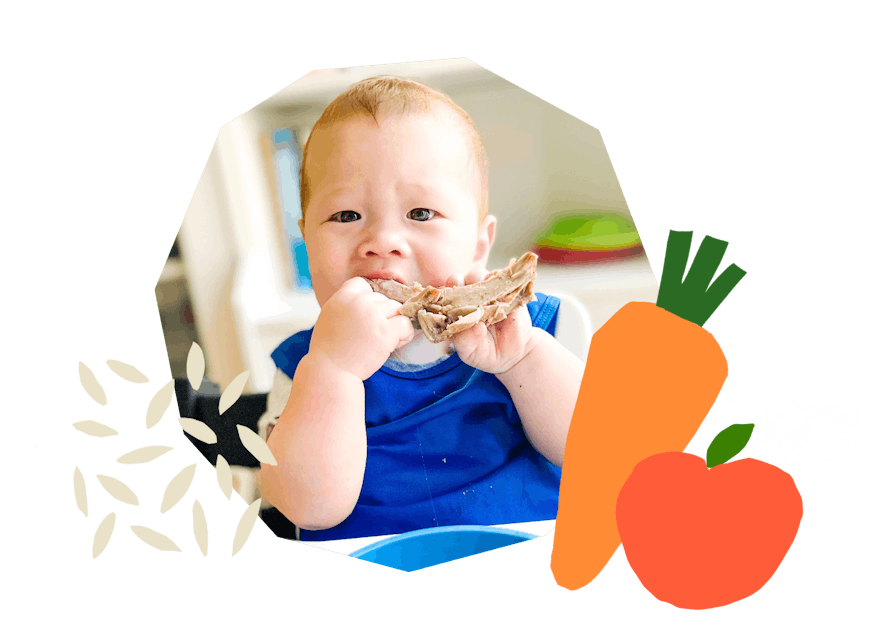
The Program Baby-Led Weaning with Katie Ferraro
A step-by-step digital program for starting solid foods safely and navigating the original 100 FIRST FOODS™ meal plan with baby-led weaning.
 EXPERT-LED, PROVEN APPROACH TO EATING REAL FOOD
EXPERT-LED, PROVEN APPROACH TO EATING REAL FOOD CONCISE VIDEO TRAININGS TO MASTER BABY-LED WEANING
CONCISE VIDEO TRAININGS TO MASTER BABY-LED WEANING 100 FIRST FOODS DAILY MEAL PLAN WITH FOOD PREP VIDEOS
100 FIRST FOODS DAILY MEAL PLAN WITH FOOD PREP VIDEOS
Baby-Led Weaning for Beginners Free Workshop
Is your baby ready to start solid foods, but you’re not sure where to start? Get ready to give your baby a solid foundation to a lifetime of loving real food…even if you’re feeling overwhelmed or confused about this next stage of infant feeding.
Get baby-led weaning recipes and tips delivered to your email inbox.

